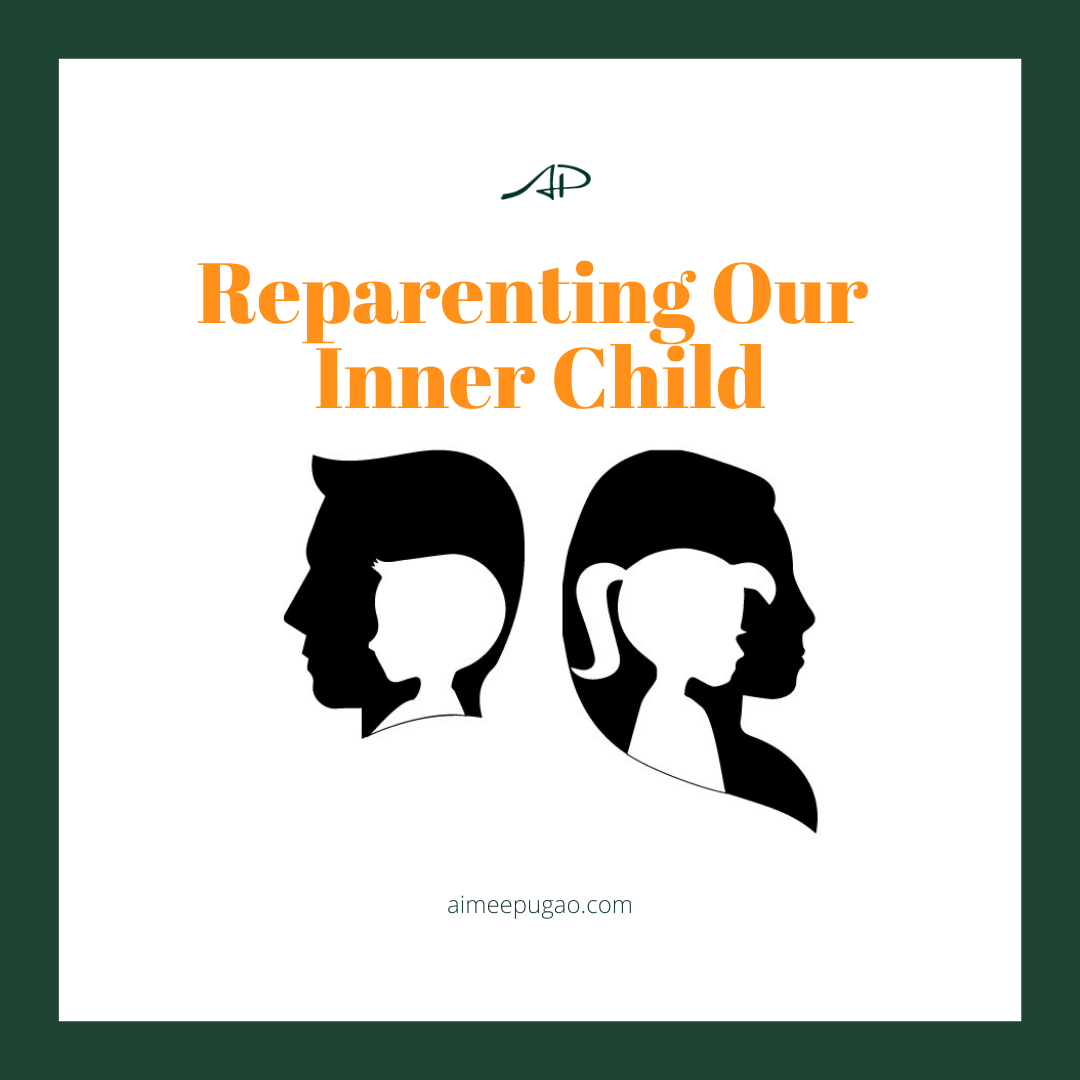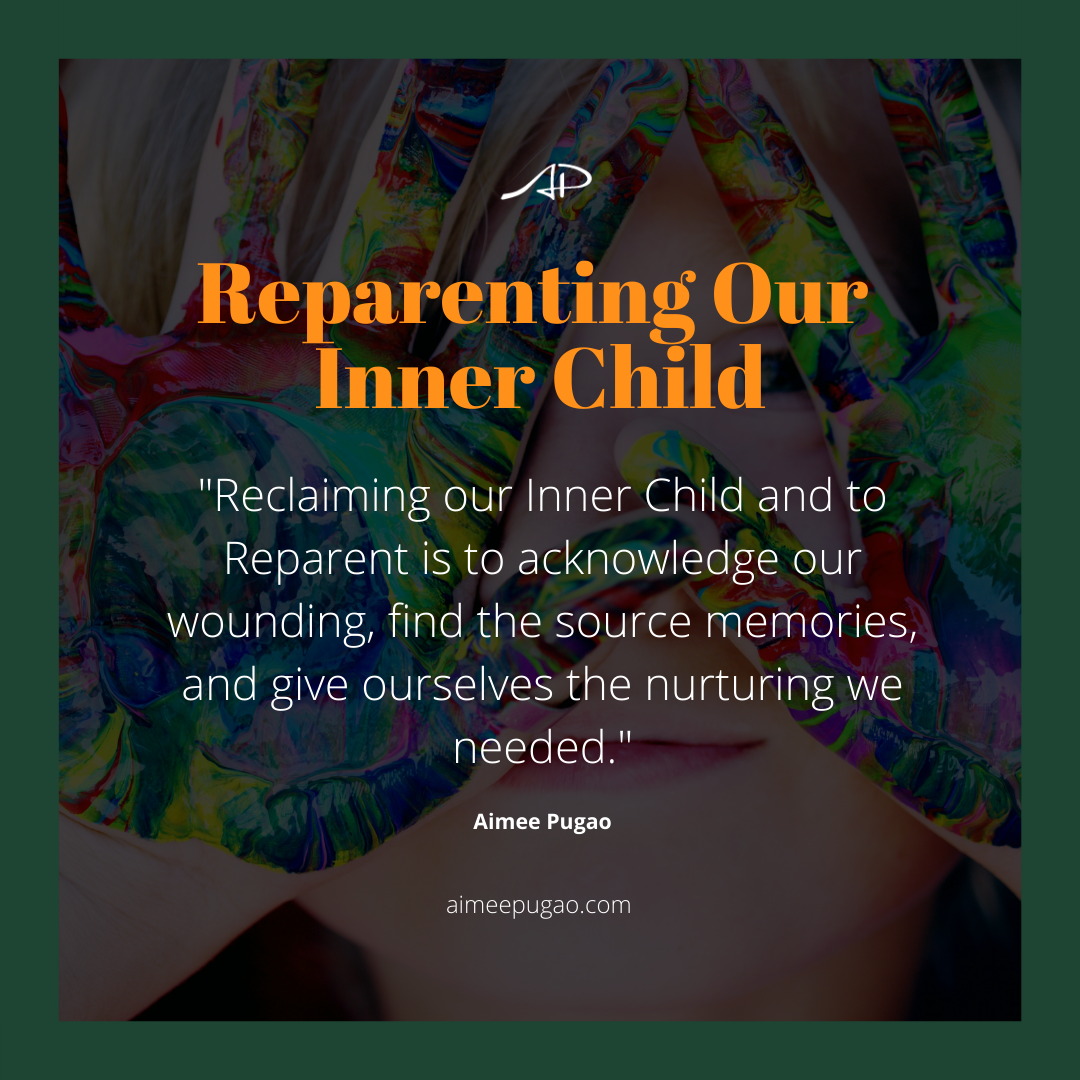The term Inner Child is used by popular psychology. It was originally coined by Eric Berne, a Canadian psychoanalyst, in the book Transactional Analysis in Psychotherapy, published in 1961. It was popularized by Dr. Alice Miller and John Bradshaw in the 1980s.
What is the Inner Child?
The Inner Child is not physically real, but a figurative and metaphoric child within each of us. We were all once children, and the Inner Child is that part of ourselves that is childlike in both the positive and negative sense. When our Inner Child is robust and healthy, it’s that part of us that remains full of innocence, trust, awe, and wonder. We feel connected, safe, invigorated, and inspired.

Healthy Inner Child
In the book “Homecoming,” John Bradshaw uses the acronym “WONDERFUL” to represent the natural traits of the healthy Inner Child.
WONDERFUL – Healthy Inner Child
| Wonder | Everything is interesting and exciting. |
| Optimism | To be able to be positive, open and trusting. |
| Naivete | Innocent and docile, which fosters learning. |
| Dependence | Needs others for learning development in the process of maturing and ripening. |
| Emotions | Laughter and weeping, it’s natural for children to see the humour in an array of things, that natural child is allowed to weep and express sadness. |
| Resilience | The ability to bounce back from the stress induced by the environment. |
| Free Play | A natural sense of freedom, when they feel safe and move with spontaneity. |
| Uniqueness | Sense of special unified wholeness. |
| Love | Naturally predisposed to love and display affection. |
We all deserve to live a happy, complete and fulfilled life. When we feel safe and loved, our wonderful Inner Child is free to interact in this world.
Wounded Inner Child
When we are emotionally wounded from the past, parts of our emotional maturity are delayed and stuck in childhood, even when we have physically matured to our chronological age. As adults, we feel disconnected from life, resentful, hurt, angry, and lonely. Our pain will manifest itself in various manners.
We may not have been disciplined and had very little structure, or we were over-disciplined. As a result, emotional regulation is difficult; we are prone to breakdowns and fits of anger, or we learned our feelings were bad and suppressed them. If we weren’t emotionally validated or felt loved as children, we become prone to codependency and, at the opposite end of the same spectrum, narcissism.
In the book “Homecoming,” John Bradshaw uses the acronym CONTAMINATE to illustrate the many ways how the wounded Inner Child contaminates our adult life.
CONTAMINATE – Wounded Inner Child
| Codependence | When we feel our worth depends on another person, loss of identity does not know who we really are, tend to have an outward false self. |
| Offender Behaviour | Commit offences and divert responsibilities of actions (i.e. Hilter, sexual offenders, etc.) |
| Narcissistic Disorders | The insatiable craving for love, attention, and affection from others. |
| Trust Issues | A deep sense of distrust, the world is a dangerous, hostile, unpredictable place. |
| Acting Out/Acting in Behaviours | Acting Out: Act out our childhood parental relationships (i.e. If our mother was abused, we seek partners to abuse or are abusive). Acting In: We act out what we told as children, and we punish ourselves (i.e. If we told we were stupid, we tell ourselves that as adults). |
| Magical Beliefs | Illogical and fairy tale thinking; money solves all issues, if this person leaves me – I’ll die, only a partner will complete me. |
| Intimacy Dysfunctions | Being involved in the push and pull relationships. Not knowing how to spot or cultivate real intimacy. |
| Non-disciplined Behaviours | Will procrastinate and/or seek instant gratification. |
| Addictive/ Compulsive Behaviours | Activity addictions (i.e. work, shopping, gambling, sex, etc.), cognitive addictions (i.e. overthinking, theorizing) and feeling addictions (i.e. rage outbursts, emotional breakdowns) |
| Thought Disorders | Not being able to separate thoughts and feelings (i.e. If I feel guilty, I must be a bad person). Having several emotional triggers. |
| Emptiness (Apathy/
Depression) |
Feeling nothing or feeling in a state of depression most of the time. |
What is Reparenting?
If we have a wounded Inner Child, it will continue to impact the quality of our life. Now that we are adults, it now becomes our responsibility to heal our Inner Child and Re-Parent ourselves. Many of us did not feel emotional support and love growing up. This is not to blame our parents. They did the best they could with what they knew at the time and how they were raised.
Reparenting ourselves is being advocates for our own lives and healing. We can learn to give ourselves exactly what we needed growing up, and we can give our inner child the appropriate loving discipline, care, and compassion. When we Reparent, we learn to process our emotions and be loving, nurturing, and supportive figures to ourselves we lacked while growing up. We can learn how to regulate our emotions, become resilient, express and feel joyous, and love who we are without the need for external validation.
How to Reparent our Inner Child
“The happiest moments of your life — when the real you comes out when you don’t care about the past and you don’t worry about the future. You are childlike.”
— Miguel Angel Ruiz
When we become in touch with our Inner Child and Reparent ourselves, we end up releasing the feelings of denial, neglect, abandonment and rejection. This allows for the Healthy, WONDERFUL Inner Child to be free to feel happy, joy, loved, be safe, heard, understood, and welcomed.
Reclaiming our Inner Child and to Reparent is to acknowledge our wounding, find the source memories, and give ourselves the nurturing we needed. Thereby releasing the pain and reprocessing the memories from a negative experience to a positive one. We can do this through several techniques. Some are:
Visualization and Talking to our Inner Child
We visualize ourself as a child; we also visualize ourself as an adult close to our child self. We give our inner child a safe setting, a space to be heard, acknowledged, and are understood. We might tell them that “I hear you,” “I love you,” “I’m here for you,” “It was not your fault,” “I care for you,” and “You’re no longer alone.”
This is especially useful to do whenever we are emotionally triggered. When we notice we are emotionally heightened, we tend to feel guilt, shame, fear or resentment. This is the best time to allow ourselves to feel our feelings and then give ourselves the comfort we need.
Recreate Activities We Enjoyed
As a child, if we loved to build pillow forts, climb trees, paint, or whatever we enjoyed doing, we need to allow ourselves to get back in touch with that curiosity, fun, and wonder.
Journaling
Get in touch with our Inner Child by:
- Writing down how we felt from the perspective of the Inner Child. It’s best to focus on a specific event or feeling so that we don’t become overwhelmed.
- We want to sit with those feelings; if we avoid them, they will only increase and manifest in another fashion. To heal, we must go through the fog of pain and grief. We want to acknowledge and honour our pain.
- Write a letter back to our inner child as our adult self giving us what we need, such as acknowledging our pain, reassurance, safety, the comfort we needed to hear, and the permission to resist and patience when our inner child isn’t ready yet. We know what we need to hear; we know what we want and what we are ready for.
Inner Child Meditation
- Think of the first time we ever felt not worthy or loved etc.
- Allow ourselves to be the child and feel the pain, to express all the emotions we carry. If we feel like we need to cry, then cry.
- Imagine the child we were, and as our adult, we currently are and give that child exactly what we needed at that time.
-
- We may have needed acknowledgment of our pain, reassurance, safety, comfort, compassion, permission to say no, and patience we needed.
- We know exactly what we need to hear, what would have comforted us.
When we get in touch with our Inner Child lovingly and compassionately, we Reparent ourselves and give ourselves the much-needed support, love, understanding, and patience. We free ourselves from the deep-seated pain. When this is completed for many of the hurtful memories, we’ll notice our emotional wounds start to diminish, and we become emotionally freer and lighter.
It’s helpful to repeat all or some of these exercises several times with different memories.







